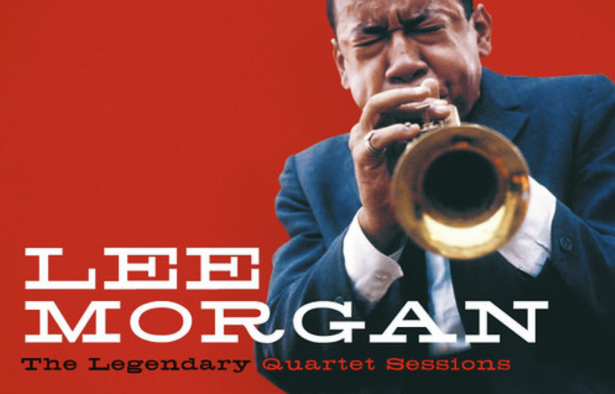A minute into Art Blakey and the Jazz Messengers’ 1959 standard Moanin’, its bluesy piano refrain is blown open by the piercing burst of a single trumpet note. That is Lee Morgan at 20 years old, soloing with a confidence that would come to define the so-called “hard bop” sound of jazz label Blue Note.
At 18, he had already played with legendary composer Dizzy Gillespie and, by 19, he was accompanying John Coltrane. By 33, he was dead – shot by his partner Helen.
Joining the ranks of pioneering jazz musicians who died too young, like Clifford Brown and Albert Ayler, Morgan never reached household name status like fellow trumpeters Miles Davis, Louis Armstrong or Chet Baker. Yet he was well on his way with an astonishing 25 albums recorded as a bandleader for Blue Note and countless appearances as a sideman.
Much like his life was cut short, so is his legacy – pressed to wax and then resigned to the archive. Kasper Collin’s 2016 documentary I Called Him Morgan is a masterful and much-needed act of remembrance, bringing Morgan’s genius back to life, as well as examining his downfall with a compassion that avoids reducing its tragedy into a true crime saga.
We begin like the meandering and unpredictable opening of an instrumental solo with the swaggering figure of Larry Reni Thomas, a jazz DJ and North Carolina teacher. In the early 90s, he discovered that Morgan’s widow Helen was attending his adult education class and subsequently convinced her to give him an interview in February 1996, only a month before she died.
Helen’s half-swallowed voice comes to us through the tape hiss to describe her childhood growing up in Wilmington and having two children at only 13 and 14 out of wedlock before leaving them in North Carolina with her grandparents and moving to New York at 17. There, her apartment became a key hang for musicians – largely due to the pot of beans she would always have on the stove.
We then cut to Morgan – 13 years Helen’s junior – as remarkable footage of him playing with Gillespie and Blakey in the late 1950s showcases a towering creative force hidden within the fresh-faced, emaciated frame of a teenager. Talking heads including saxophonist Wayne Shorter, Gillespie’s drummer Charli Persip and bassist Larry Ridley spell out his precocious genius, while the black-and-white photos of Blue Note co-founder Francis Wolff express the cool camaraderie of now-legendary recording sessions.
With only a 1971 recorded interview of Morgan available, his horn does most of the speaking throughout the film, building an impressionistic image that encircles the man behind the music. Signifiers of his self-destruction begin to weave their way into Collin’s narrative though: the head bandage concealing a burn wound sustained after a heroin overdose; his adrenaline-fuelled need to race his car through Central Park; the anecdote of his turning up to a session after selling his shoes for drugs.
He is eventually booted out of his groups and ends up on the street without a coat and with a mouthful of broken teeth. One day, Helen sees him and offers shelter from the snow. They soon become “confidantes and lovers”, the composer Benny Maupin recounts.
Morgan gets clean and gets back to music with Helen as his manager. As his star once again ascends, though, he begins an affair and Helen is sidelined. Through the whirring of the tape recording she tells us how she battled through a February snowdrift to see Morgan play a show at New York’s Slugs club in 1972, as they were becoming estranged. He had totaled his car on the way to the venue and between shaky sets they had an argument.
Then, “we heard two pops and that was it,” saxophonist Billy Harper solemnly recounts. Morgan is shot and, while the ambulance spends an hour battling through the weather to get to him, he bleeds to death.
Just as breath builds pressure to produce a horn’s note, so Collin’s narrative in I Called Him Morgan is shrouded in evocative atmospheres of sound, archive images and snippets of testimony that build to the climax of this murder. Ultimately, it is a film not just for jazz fans; it is the story of the bonds made through crisis and the chaos that ensues when that crisis consumes.
The questions that remain reflect the incompleteness of Morgan’s life and music, as well as the faltering continuation of Helen’s, who moved back to Wilmington after her jail sentence for manslaughter and spent her time volunteering in the church. She died before she could complete her interview with Thomas. All we are left with are voices, memories, and – perhaps most importantly – the wordless stories of music.
I Called Him Morgan is available on Netflix in the US and UK


Spread the word